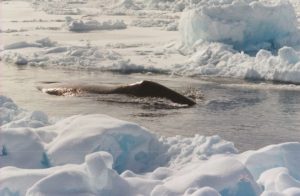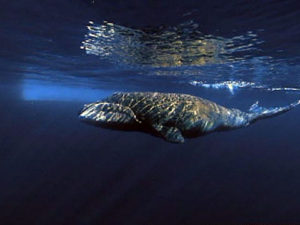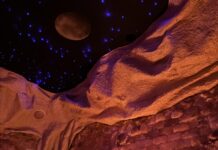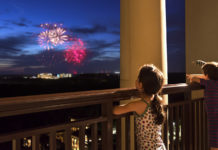Bowhead whales are famous for their lifespans, estimated to approach 200 years, but even the best age estimates aren’t precise for all animals in a population. Now, researchers have announced the most precise, population-wide age estimation method to date — a critical tool for better understanding and managing these protected whales.
The improved age test was published in the latest volume of the Journal of Cetacean Research and Management by scientists from Mote Marine Laboratory, the University of Queensland, Givens Statistical Solutions, LLC, the University of South Florida, and the Department of Wildlife Management at North Slope Borough in Barrow, Alaska.
Bowhead whales (Balaena mysticetus) live in the circumpolar Arctic and sub-Arctic waters, including the Bering, Beaufort and Chukchi seas. They feed on krill using their baleen — in this case, more than 600 long filtering plates in their mouths, in place of teeth. Historical hunting reduced bowhead whales’ abundance notably, and today they are protected in U.S. waters. Only Alaskan Native subsistence hunters may legally harvest a very limited number of whales, whose Bering Sea numbers have shown strong growth nearing a full recovery.
“For effective management, you need to understand the species — how many there are, how long they live, when they mature and begin reproducing, how fast they grow, and other attributes tied to age,” said Mote Marine Laboratory Senior Scientist Dr. Dana Wetzel, the study’s Principal Investigator. “With bowhead whales, scientists have been working to assess their ages for a long time, but there are limits to each technique out there. We looked at one promising technique that can be used with both male and female whales at any stage of life, and found we could get more robust, reproducible results needed for management by tackling the chemistry.”
That technique — aspartic acid racemization (AAR) — estimates age using amino acids inside the eye. Within the lens, aspartic acid changes predictably over time from one form, called L, to its mirror image, called D. This natural “clock” is studied in baleen whales because they lack a more commonly used, broadly applicable age indicator: teeth with growth layers. Scientists also estimate bowhead whale age by body length, baleen length, baleen carbon cycling, and evidence of female reproductive history called corpora — but each strategy has limits. Baleen estimation works with young whales but not older animals whose baleen is worn or broken. Corpora counts apply only to mature females. Body length doesn’t relate to age consistently. However, AAR shows promise for all ages and both sexes — if lab tests can produce clearer results with less “noise.”
For decades, scientists at Alaska’s North Slope Borough have worked to advance bowhead whale research and management in collaboration with Native subsistence hunters who have harvested the whales in limited numbers for thousands of years. Samples from harvested whales help advance research geared toward sustaining and growing their populations.
“By improving the age estimates of bowhead whales, we can better address some of the fascinating aspects of these remarkable long-lived mammals,” said Dr. John Craighead “Craig” George, Senior Wildlife Biologist with Alaska’s North Slope Borough. “Questions about their apparent cancer resistance, changes in growth and body condition due to climate warming and sea ice reduction, and many other questions, can be better addressed with good age estimates.”
Wetzel and colleagues were excited to help AAR age testing realize its potential. “Science is successful because it’s iterative — we build on past discoveries, develop new technologies and refine our methods and data over time,” Wetzel said.
Project scientists extracted and analyzed tissue from the eye lenses of 68 bowhead whales at various stages of life. At each step of the process, they looked for ways to “clean up,” or reduce the variability of, the results. For instance, during derivatization — a chemical change that prepares the lens extract for analysis — Mote researchers used an instrument to automatically perform some steps previously done by a lab technician, reducing chances for human error and contamination. For more info- https://mote.org/aquarium

























